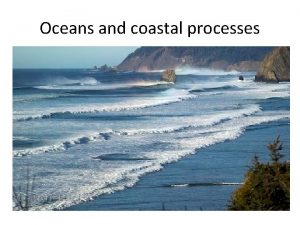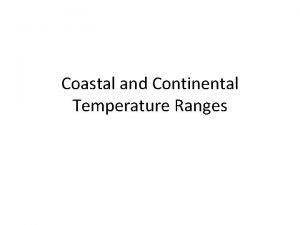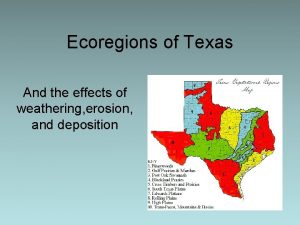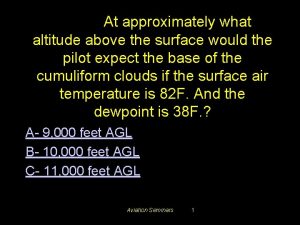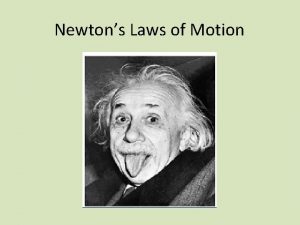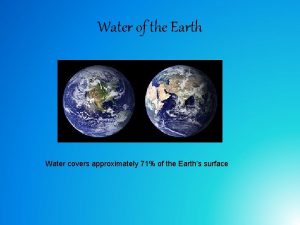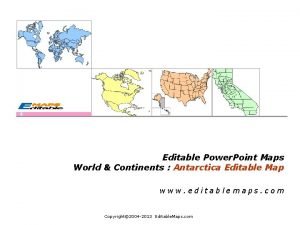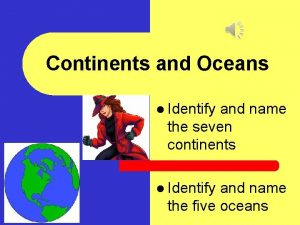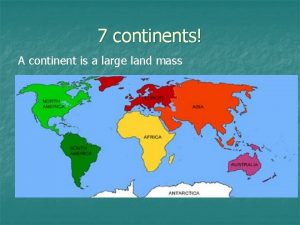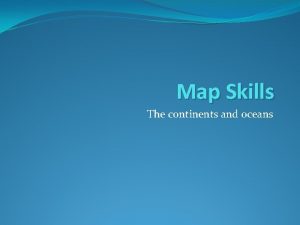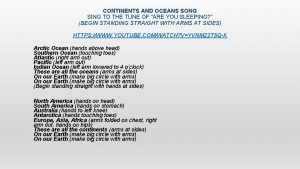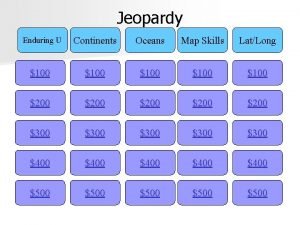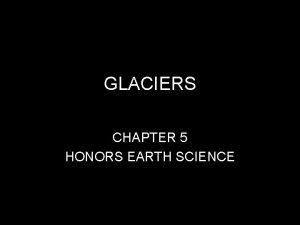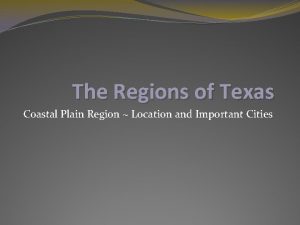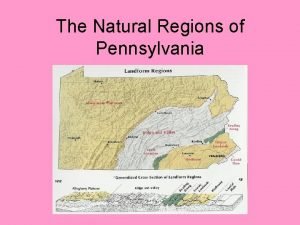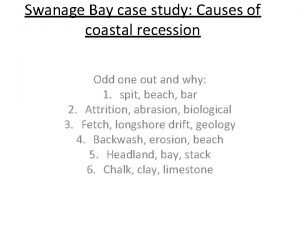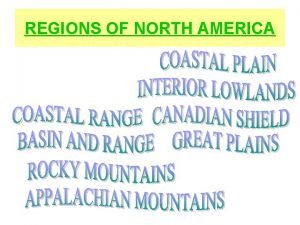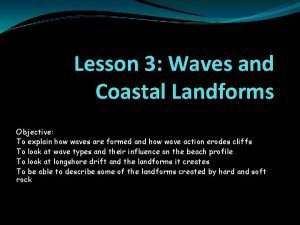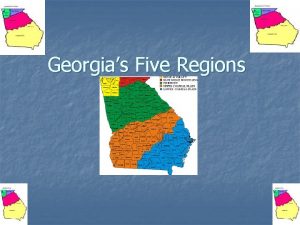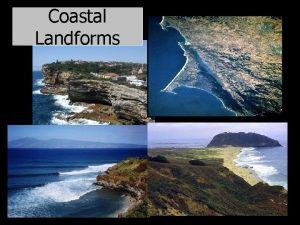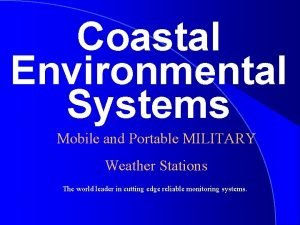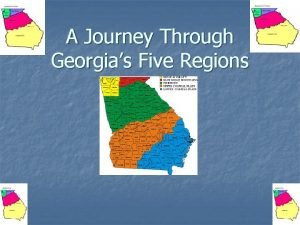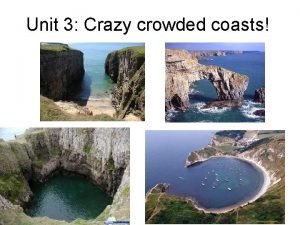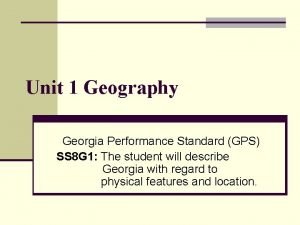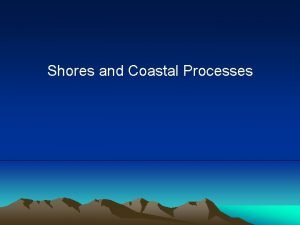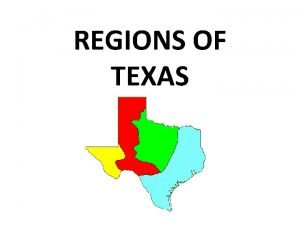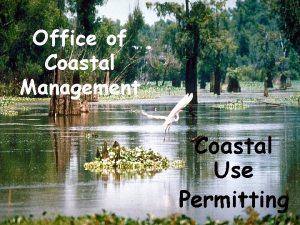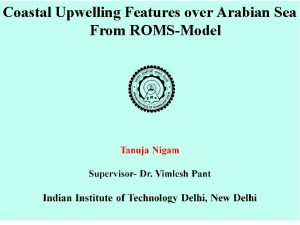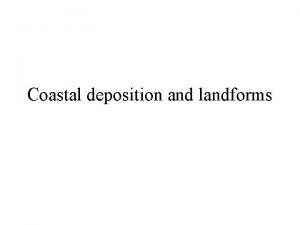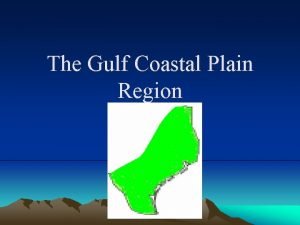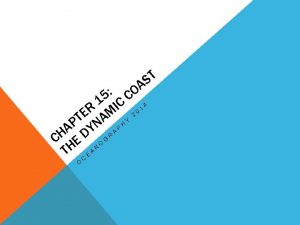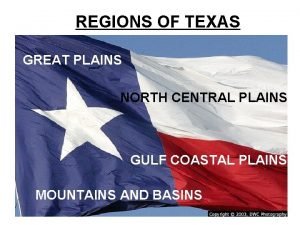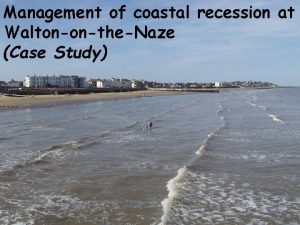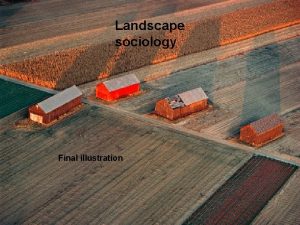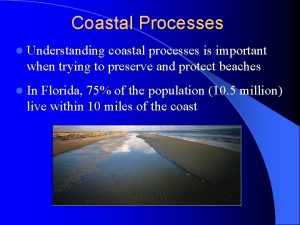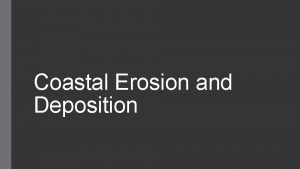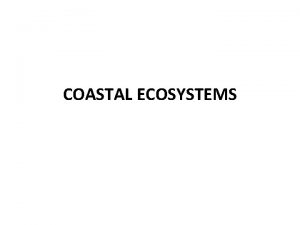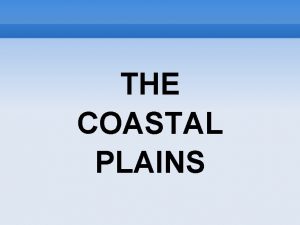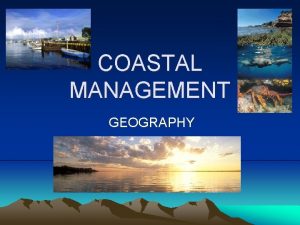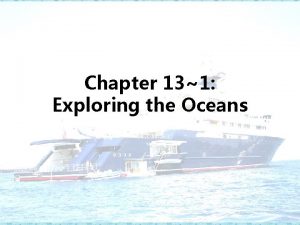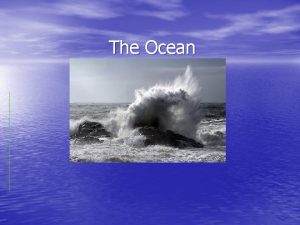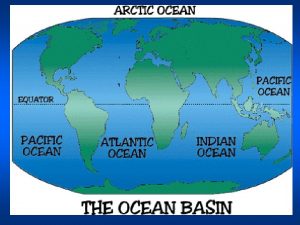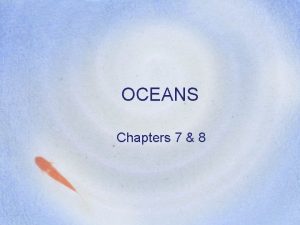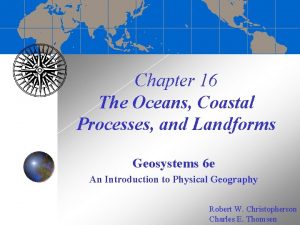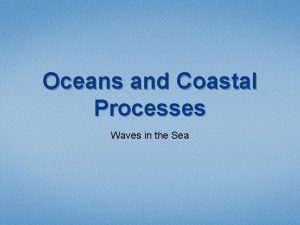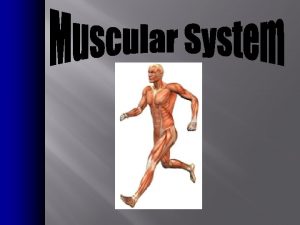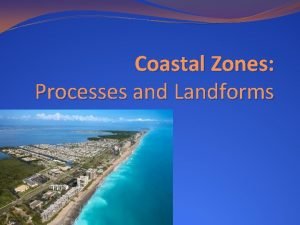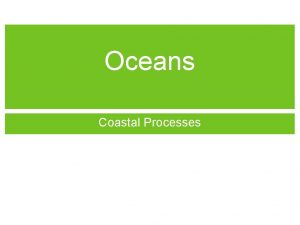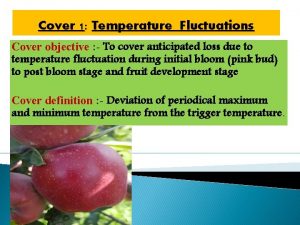Oceans and coastal processes Oceans cover approximately 72

































































- Slides: 65

Oceans and coastal processes

• Oceans cover approximately 72% of Earth • All the oceans are interconnected • Oceans help distribute heat


• 2 theories: • Comets hit Earth and released water • Outgassing from Volcanoes during earth’s early history

Volcanoes are the most accepted theory More than half of cloud is water vapor ---->

Approximately 4. 4 Billion years ago the Earth was cooled enough to sustain liquid water

Comets are dust and water

Sediments: • Weathering and erosion of land rocks eventually find their way to the oceans were they are deposited • Sediments may contain marine fossils • Sediments form sedimentary rocks

Why is the ocean salty? • Rivers and streams carry sediments and dissolved material (salts)into the ocean • Evaporation may cause salts to precipitate out.

Commercial salt beds

Ocean Floor Topograpgy • It includes basins, abyssal plains, and mid ridges.

Topography • Hydrosphere is thin – ave. depth ~ 4 km • Trenches can be VERY deep ~ 8 to 10 km deep • Mid-ocean ridges may rise above sea level ex. Iceland • Ocean shelf is shallow – good for fishing and oil drilling – but who owns them? • Abyssal plain low, flat ‘bowl’ like


topography

Mid Atlantic ridge • • Extends to 10, 000 miles. It is 25453 feet deep. Hits the surface and keeps going.

Waves and movement of water • In general waves move ENERGY not really water • Surface water moves in small ellipses as the wave (energy) passes by • Waves release energy as they break • Energy (waves) can move sediments along beach • Energy (waves) can shape shorelines



Waves form from the interaction of the atmosphere on the hydrosphere

The longer the wind travels the bigger the waves get!

Storm surge erosion

North Caroline beach after a hurricane

Seiches • “to sway back and forth” • Caused by large change in air pressure and high winds • Winds blow for hours and cause water to ‘shift’ to one side of the basin

Longshore current


Longshore Currents • Caused by swells • Extends from shallow water • Change depending on size, shape, and direction of the swell

How do you determine the direction of the current? • • • Run parallel to shore From south to north From north to south From west to east From east to west

• • • the transportation of sediments direction depends on prevailing winds takes place in surf zone swash-movement of the pebble up the beach backwash-moves pebble back down beach

Jetties and longshore drift Be able to draw this!!

Rip currents or tides

How to escape a rip current! Swim across the current. • Keep in mind: NEVER SWIN BACK UP!!

Where They’re Formed • oceans

Spit- Sandspit – sand feature shaped by waves New Zealand Nelson West coast

Beach formations

Head land erosion

What is a headland? • Headlands are parts of a shore that reach out into the ocean • Coast are made up of different rock types: hard and soft rocks • Less resistant & more resistant rocks This is a stack.

Wave Action of the Headlands • Waves reach shallow water sooner at the headlands. • waves slow down sooner in front of headlands. • The wave bends nearly parallel to the headlands, and hits all three sides of the it.

Headland Erosion • Waves crash against headlands and form caves • Erosion continues and forms arches • Arches then break leaving a stack • Stacks break and form stumps

Refraction of Ocean Waves As a wave comes in, the end closest to shore scrapes bottom first and slows down.

Where does deposition occur? • Deposition occurs in the ocean right at the base the headlands. • Waves hit the base then cause abrasion • Coastlines are rounded All parts of a headland.

Sea Cliffs

Sea Stacks

Headland erosion

Head land

Wave erosion

South shore of Long Island showing shaping caused by waves.

Tsunamis-Formed after earthquake HUGE waves, Much destruction

Tsunami formation

Tsunami formation


Preventing or reducing erosion:

Break walls

Walls

Groins • As sediments move down a beach because of the longshore current, the current loses velocity as it meets the groin. This causes the current to dump part of its sediment load on the upcurrent side of the groin. • As the current passes the groin it begins to pick-up sediment again, and erosion occurs on the beach located on the downcurrent side of the groin.

Groins

Groins • Groins are man-made structures used to change the effects of beach erosion.

groins

Unconsolidated glaical sediments -groins

More groins

Jetties

Jetties Packery Jetties channel to Gulf of Mexico




 Jetties
Jetties Concurrent processes are processes that
Concurrent processes are processes that Heterophoria vs heterotropia
Heterophoria vs heterotropia Cover uncover test vs alternating cover test
Cover uncover test vs alternating cover test Lancaster red-green test
Lancaster red-green test Erosion in piney woods
Erosion in piney woods Coastal and continental temperature ranges
Coastal and continental temperature ranges Coastal and plateau tribes
Coastal and plateau tribes Demerits of tourism industry
Demerits of tourism industry Piney woods ecoregion of texas
Piney woods ecoregion of texas 1750 music
1750 music The earth formed approximately
The earth formed approximately Drain current in the constant-current region increases when
Drain current in the constant-current region increases when At approximately what altitude above the surface
At approximately what altitude above the surface Luke autbeloe drops an approximately
Luke autbeloe drops an approximately Water covers approximately
Water covers approximately The value of vgs that makes is approximately zero
The value of vgs that makes is approximately zero A charm quark has a charge of approximately
A charm quark has a charge of approximately Which is approximately equal to sin a
Which is approximately equal to sin a 4 kinematic equations
4 kinematic equations A hydrogen atom has a diameter of about 10 nm
A hydrogen atom has a diameter of about 10 nm Antarctica outline map
Antarctica outline map Map
Map Names of the continents and oceans
Names of the continents and oceans The prime meridian runs through which 3 continents
The prime meridian runs through which 3 continents What are the 7 continents and 5 oceans
What are the 7 continents and 5 oceans Continents and oceans map
Continents and oceans map Oceans and continents song
Oceans and continents song Continents and oceans jeopardy
Continents and oceans jeopardy Continents and oceans jeopardy
Continents and oceans jeopardy Chapter 5 glaciers oceans and landscapes
Chapter 5 glaciers oceans and landscapes Ocean tides observed at coastal locations
Ocean tides observed at coastal locations Texas coastal plains plants
Texas coastal plains plants Atlantic coastal plain region pennsylvania
Atlantic coastal plain region pennsylvania Piedmont region new jersey
Piedmont region new jersey Swanage coastal management
Swanage coastal management Coastal carolina student count
Coastal carolina student count Texas coastal plains
Texas coastal plains Plain south america
Plain south america Wave-cut platform
Wave-cut platform Coastal region of india
Coastal region of india Stcw master 500gt
Stcw master 500gt Happisburgh case study
Happisburgh case study Coastal plains attractions
Coastal plains attractions Emergent vs submergent coastline
Emergent vs submergent coastline Coastal environmental systems
Coastal environmental systems Coastal region south africa
Coastal region south africa Piedmont landforms
Piedmont landforms Uri coastal fellowship
Uri coastal fellowship What is a spit
What is a spit Coastal plains ga to columbus georgia gps
Coastal plains ga to columbus georgia gps Wave refraction
Wave refraction Edwards plateau major cities
Edwards plateau major cities Basin and range location
Basin and range location Louisiana coastal use permit
Louisiana coastal use permit Upwelling
Upwelling Coastal deposition
Coastal deposition Submergent coast
Submergent coast Coastal landscapes a level geography
Coastal landscapes a level geography Gulf coastal plains subregions
Gulf coastal plains subregions 5 regions of georgia
5 regions of georgia A delta
A delta Oregon coastal birds
Oregon coastal birds Great plains cities texas
Great plains cities texas Walton on the naze coastal management case study
Walton on the naze coastal management case study Coastal landscapes in the uk
Coastal landscapes in the uk
